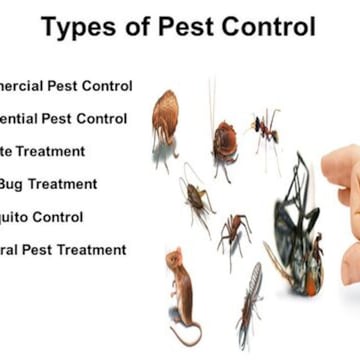The Ultimate Guide To Pest Control
Table of ContentsThe Buzz on Pest ControlThe 5-Minute Rule for Pest ControlPest Control Can Be Fun For AnyonePest Control - TruthsThe Greatest Guide To Pest Control
Limitations of Chemical Management Be able to assess pest problems, determine if administration is necessary, and make appropriate recommendations making use of IPM strategies. Be familiar with various techniques of parasite monitoring - their benefits and limitations.This chapter talks about (IPM), a technique that uses understanding about parasites and their, techniques, nonchemical approaches, and pesticides to manage bug troubles. Added info concerning IPM for particular plants is included in chapters that concentrate on those plants. Insects in a yard or landscape might include pests and mites, weeds,, mammals, and birds.
Bugs and weeds, however, play a duty in the. After growing a yard or establishing a yard, the all-natural process of plant sequence starts to improve and nonnative plants.
What we call "parasites" are component of a natural system at work. Only people think about specific species parasites when they happen where they are not wanted.
The 6-Second Trick For Pest Control
Insects vulnerable to a pesticide were quickly killed, leaving resistant ones to reproduce and multiply. It ended up being clear that chemicals alone would certainly not solve all parasite troubles. Instead, overuse of pesticides created the advancement of resistant bugs. Researchers started to develop a new technique to pest control. This new approach was explained as integrated bug monitoring (IPM).
An IPM plan allows some degree of parasites in the environment. Bugs are much less most likely to survive a program that utilizes numerous various techniques of decreasing their populations. Integrated insect monitoring was initial suggested by entomologists due to the fact that pests were the very first team of insects to verify hard to take care of with chemicals alone.
pest and host properly. and consider financial or visual injury. A threshold is the factor at which action should be taken. a treatment technique making use of mechanical, social, organic, or chemical controls, or a mix of these approaches. success of therapies. IPM has extended past pests to monitoring of all pest populations: weeds, illness organisms, and mammals.
Pest Control Things To Know Before You Buy
Monitoring as opposed to eradication of pests is the objective. An IPM strategy begins with a careful examination of each parasite problem. Just then can one choose about the proper techniques essential to subdue pest tasks. The life process article source of the pest, feasible damage, all-natural enemies, and effects of weather, to name a few aspects, are thought about before a control plan is implemented - Pest Control.
Clover expanding in a grass might be deemed an unwanted weed, yet as a legume it is synthesizing nitrogen for the soil and the flowers are giving nectar to honey and other. Resistance for some weeds may belong to an IPM plan. may be consuming the fallen leaves of a plant, yet his comment is here when they are determined as the larvae of Eastern tiger swallowtail butterflies, their damages may be tolerated so we can enjoy the beautiful butterfly.

The 2nd most vital tool in insect administration is early treatment. Reacting to issues swiftly, before they have time to multiply, calls for a less remarkable treatment.
A Biased View of Pest Control
Lots of secure, practical, nonchemical methods of plant security and bug monitoring might reduce or this article eliminate the need to spray. Other techniques are most helpful when made use of with chemicals. To implement monitoring practices properly and to lessen losses, garden enthusiasts ought to know the kinds of parasites that strike plants and comprehend pest biology.

Carrying out a dirt examination and applying only the suggested amount of plant food and lime makes best use of the advantage to the plant while minimizing troubles associated with too much use plant food - Pest Control. Covering the dirt with numerous inches of mulch shields the plant in a number of means: decreasing dirt water loss to evaporation, lessening weed competitors, giving nutrients, and developing a suitable environment for earthworms and microorganisms that keep the soil loose for roots and damage down natural material to launch nutrients
If mulch touches the trunk, it can develop a way for voles, germs, and fungis to attack the plant. Do not utilize manure or garden compost that has actually not thoroughly disintegrated as a leading dressing since it can urge undesirable insects. Study recommends that farming is destructive to soil structure.
Getting My Pest Control To Work
If tilling is regarded required, take into consideration doing it in the autumn when the life cycles of lots of insects brings them near the surface. At the surface, pests come to be revealed to the climate as well as birds and various other natural enemies.